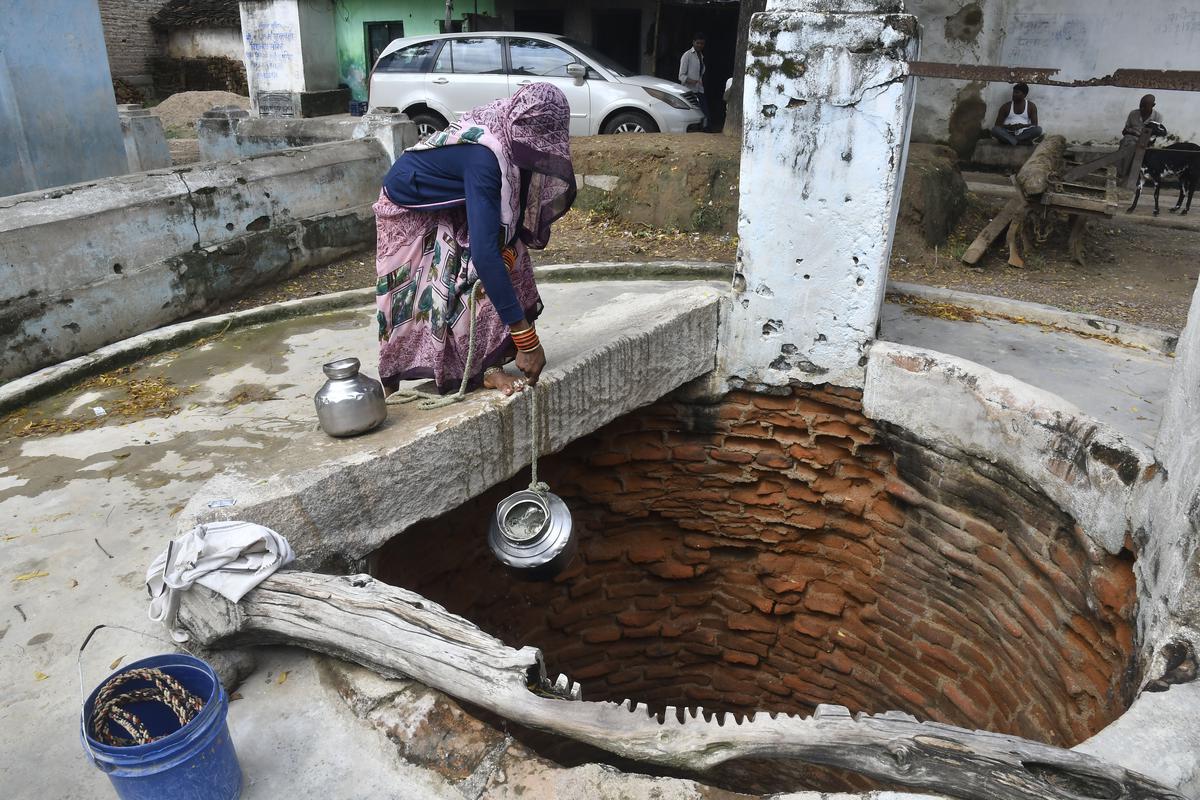Jal Jeevan Mission remains a pipe dream
Context
On Independence Day 2019, the water-stressed Mahoba district in south-eastern Uttar Pradesh reported only 1,612 families having tap connections. Four years later, 1,29,209 families — or around 98% of all rural homes in the district — have water connections, according to the public dashboard of the Jal Jeevan Mission (JJM), the Centre’s 3.6 lakh crore plan that aims to supply piped water to every village home by 2024.
What is the Jal Jeevan Mission?
- The Jal Jeevan Mission aims to deliver safe and enough drinking water to all rural Indian homes by 2024 via individual household tap connections.
- The program will also include mandated source sustainability measures such as recharge and reuse through greywater management, water conservation, and rainwater collection.
- The Jal Jeevan Mission would take a community-based approach to water, with substantial information, education, and communication as critical components.
- On August 15, 2019, the Mission was officially launched.
What were the mission and objectives of the Jal Jeevan Mission?
Missions:
- States/UTs are developing a participatory rural water supply strategy to ensure long-term potable drinking water security for every rural household and public institution, such as GP buildings, schools, Anganwadi centres, health centres, wellness centres, and so on.
- States/UTs for the development of water supply infrastructure so that by 2024, every rural family has a Functional Tap Connection (FHTC) and water in sufficient amount and of prescribed quality is accessible regularly.
- States and territories must plan for drinking water security.
Objectives
- To make FHTC available to every rural family.
- Priority should be given to providing FHTCs in quality-affected areas, villages in drought-prone and desert areas, Sansad Adarsh Gram Yojana (SAGY) villages, and so on.
- To connect schools, Anganwadi centres, GP buildings, health centres, wellness centres, and community structures to a functional water supply.
- To check the operation of tap connections.
- To encourage and ensure voluntary ownership among the local community by contributions in cash, kind, and/or labour, as well as voluntary labour (shramdaan).
What is the current situation of the Jal Jeevan Mission?
- Significant Increase in Reported Tap Connections: Many residences now have tap connections, eliminating the need to travel long distances for drinking water.Many remote villages gained access to water for the first time in their lives.
- For example,In 2019, for example, Mahoba district had only 1,612 houses having tap connections.
- By 2023, this figure had risen to 1,29,209 families, accounting for approximately 98% of rural houses in the district.
What are concerns that rose out of the Jal Jeevan Scheme?
- Disputes in Official Data:
-
-
- Many villages that have been formally certified as having 100% coverage of Functional Household Tap Connections (FHTC) do not have working taps.
- Some houses have taps but receive little to no water from them, and in the best-case scenario, they receive only approximately two hours of water each day.
-
- Reporting Errors:
-
- Even though the official JJM dashboard indicates 100% household tap connections in all 385 villages, the reality is much different.
- This adds to Uttar Pradesh’s estimate of 1.6 crore households with working tap connections, implying widespread access to drinking water.
What are the challenges faced by the Scheme?
- Infrastructure Development:Building the necessary infrastructure, such as pipelines, water treatment plants, and distribution networks, is a big issue, particularly in isolated and geographically difficult places.
- Funding & Budget Restriction: The JJM is a big plan that necessitates significant financial resources. Obtaining and allocating finances for such a large-scale project might be difficult.
- Technical challenges:Technical and engineering challenges include designing and executing water delivery systems capable of efficiently transporting clean water across large distances and different terrain.
- Water Source Quality: Ensuring a regular and safe supply of water from rivers, dams, or other sources can be difficult, particularly in locations where water supplies are contaminated or unreliable.
- Water Treatment and Quality Assurance: It is vital to maintain the quality of water throughout the distribution system. Treatment plants must operate efficiently, and water quality must be tested on a regular basis to ensure that it fulfills safety criteria.
- Challenges in Operations and Maintenance:Water supply system operation and maintenance are critical to sustaining the scheme’s benefits. This includes fixing concerns such as leaks, breakdowns, and system maintenance.
How do we resolve these issues and move forward?
- Sustained support: Ensure that the mission receives continuous and enough support. To fulfill the large investment necessary, mobilize financial resources from both government allocations and external sources.
- Technical Knowledge: Use specialist technical knowledge while planning and installing water supply systems, especially in difficult terrain. Build capability by collaborating with engineering and water management organizations.
- Water Source Management: To maintain a regular and safe supply of water, prioritize the protection and sustainable management of water sources such as rivers, dams, and reservoirs.
- Water Quality Assurance: Conduct stringent water quality testing and monitoring at all stages of the water delivery system. Address contamination issues as soon as possible and make sure the treatment plants are operational.
- Operation and Maintenance: Establishing robust mechanisms for the operation and maintenance of water supply infrastructure is essential. Train and deploy skilled workers, and involve local populations in system maintenance.
- Community Engagement: Encourage community participation in water supply system design, decision-making, and maintenance. Raise awareness about the significance of healthy drinking water and sanitation practices.
Conclusion
In summary, while there has been a large increase in reported tap connections as part of the Jal Jeevan Mission in Mahoba district, there are disparities between official data and the actual provision of clean and reliable water service to families. Infrastructure concerns and the need to enhance water quality remain critical issues in attaining the mission’s objectives.





